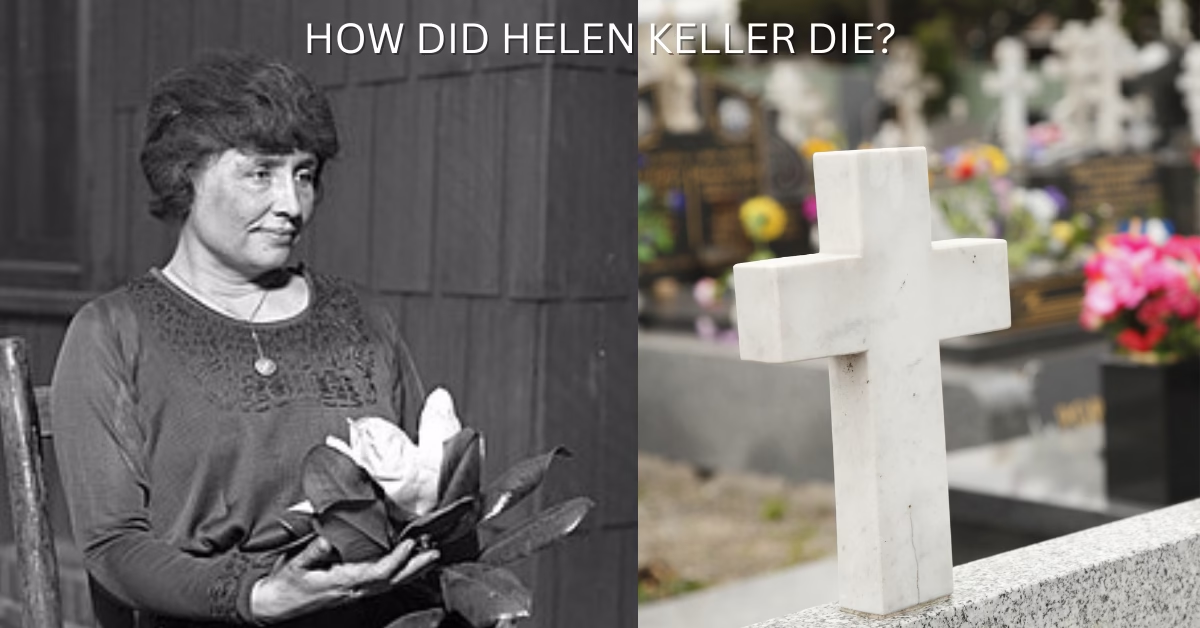How did Helen Keller die? This question often brings a pause, prompting curiosity about the final moments of a life that redefined human potential. Helen Keller’s journey was an extraordinary tapestry woven with threads of challenge, triumph, and an unwavering spirit. From the depths of a childhood illness that rendered her blind and deaf, she rose to become a world-renowned author, activist, and lecturer, inspiring millions to look beyond perceived limitations. While her life was celebrated for its remarkable achievements and her relentless advocacy, the circumstances of her passing, though peaceful, are often less discussed.
ALSO READ : Did Helen Keller Fly a Plane? Uncovering the Truth About Her Incredible Flight
The Final Years: A Gentle Decline
In the twilight years of her long and impactful life, after decades of tireless global travel and public engagement, Helen Keller’s vibrant public presence naturally began to recede. The dedicated activist who had touched hearts and minds in countless countries across five continents gradually embraced a quieter existence. This shift became particularly noticeable after 1961, when she experienced a series of strokes. These significant health events, though not immediately life-ending, necessitated her withdrawal from the demanding schedule of public appearances that had defined much of her adult life.
While the strokes undeniably affected her physical strength and mobility, preventing her from embarking on her extensive lecture tours, her sharp intellect and warm spirit remained remarkably intact. At her beloved home in Easton, Connecticut, a tranquil sanctuary she affectionately named Arcan Ridge, she continued to receive close friends and cherished visitors. She corresponded through her unique methods of communication, maintaining her connection to the world she so deeply loved. These final years were not a period of decline in spirit, but rather a gradual, dignified slowing down, allowing her to savor the peace and familiarity of her surroundings. She embraced this quieter chapter with the same grace that characterized her entire life.

The Peaceful Passing: How Did Helen Keller Die?
The end for Helen Keller arrived with a gentle quietness, befitting a woman who had taught the world the power of inner stillness. She passed away peacefully in her sleep on June 1, 1968, at her cherished home in Connecticut. She was 87 years old, having lived a remarkable life that spanned nearly nine decades, witnessing profound societal transformations and spearheading many herself.
The official medical cause of her death was attributed to congestive heart failure. This condition, common among the elderly, meant that her heart’s efficiency in pumping blood had gradually diminished over time. Her passing was not a sudden, traumatic event, but rather a serene, natural culmination of a long and exceptionally rich existence. After dedicating her entire being to breaking barriers and illuminating the path for others, she was granted a calm and unburdened farewell, simply drifting away in the comfort and familiarity of her own bed. It was a fittingly tranquil end for a woman whose life had been anything but quiet in its impact. This answers directly how did Helen Keller die, revealing a peaceful conclusion to an extraordinary journey.
A Legacy Remembered: Tributes and Resting Place
News of Helen Keller’s death resonated globally, eliciting heartfelt tributes from world leaders, disability advocates, and countless individuals whose lives she had profoundly touched. President Lyndon B. Johnson, among many other dignitaries, issued a moving statement, lauding her as a woman who “demonstrated that there are no boundaries to courage and ambition,” perfectly encapsulating the essence of her enduring message. Her death, while a moment of quiet grief, undeniably cemented her place as one of the 20th century’s most iconic and influential figures, a true pioneer whose work continues to inspire.
Following her cremation, Helen Keller’s ashes were laid to rest in the crypt of the Washington National Cathedral in Washington D.C. In a deeply symbolic and poignant gesture, her remains were interred alongside those of the two extraordinary women who had been instrumental figures in her personal and intellectual journey: Anne Sullivan Macy, the revolutionary teacher who first unlocked the world of communication for her, and Polly Thomson, her loyal and devoted companion and interpreter for many decades after Anne’s passing. This final resting place beautifully symbolizes the profound bonds of love, dedication, and shared purpose that underpinned her entire, incredible existence. Her passing marked the close of a personal story, but it simultaneously cemented her everlasting legacy as a global emblem of hope, resilience, and the boundless capabilities of the human spirit.
Thank You for Reading!
We sincerely appreciate you taking the time to explore the concluding chapter of Helen Keller’s extraordinary life. Her story continues to inspire countless individuals across generations, reminding us all of the immense power of the human spirit.
We hope this post has provided you with valuable insights and a deeper appreciation for her enduring legacy.
For any questions or feedback, please feel free to reach out to us at blogxstory@gmail.com.
Disclaimer
The information provided in this blog post about Helen Keller’s life and passing is based on historical records and publicly available information. While we strive for accuracy and comprehensive detail, historical narratives can sometimes have varying interpretations or additional nuances. We encourage readers to consult a variety of reputable sources for a deeper and broader understanding.

